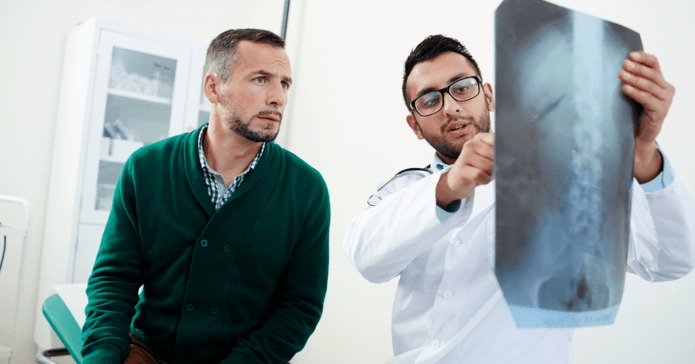

Spinal stenosis is the narrowing of the spaces between your spine which can put pressure on the nerves that travel through the spine due to a narrowing of your vertebrae. It’s most common to occur throughout the lower back. This condition is much more likely to occur as you get older, which can create long-lasting problems such as arthritis. Treatments vary from person to person depending on severity. At the New York Spine Institute, we make sure to treat your spine, neck or back issue based upon your unique situation.*
Specialized care is given to you as directed by our doctors who treat back and neck problems. It may incorporate moderate physical therapy, pain control, or surgery if needed.
At NYSI, the spine doctors have decades of experience treating complex spine disorders and are industry leaders. Our institution is lead by our medical director, Alexandre B. de Moura, M.D. FAAOS.
We understand that people from all different backgrounds will need treatment for their spinal issues. Our staff speaks a multitude of languages including Spanish, Portuguese, French, Italian, German, and Russian.
For some, spinal stenosis does not show any symptoms. But, for others, you may experience pain, tingling, numbness or muscle weakness. Often, symptoms can worsen over time. Other symptoms that you may have include:*
This type of spinal stenosis you may have is determined by where it occurs on the spine. It’s also possible to have more than one type of this condition, but the main types are:
To make an accurate diagnosis, you will first be asked about your ongoing symptoms. Your doctor may discuss with you when you first felt pain, where it’s located, and what type of numbness or weakness you may be experiencing. From there, a physical examination will occur to further access the source of your pain, and your physician will specifically look for any restricted movement in the spine or neck.*
If you are suspected for having Spinal Stenosis, you can be referred for a series of imaging tests to confirm a diagnosis. This can be a simple X-ray, but also other screening services such as MRIs and CT Scans may also be used.*
There are a number of different ways to treat your spinal stenosis. For a more conservative approach, physical therapy exercises like back stretching can help you build your strength back to normal so you experience less pain throughout the day. You may also be able to treat it with with pain relievers (over-the-counter or prescribed), given steroid injections, or a decompression procedure to remove a portion of a thickened ligament from your back.*
If more severe, however, you may require surgery to treat your spinal stenosis. One of the possible surgeries you may get is laminectomy. A Laminectomy is when one or more vertebrae is removed to relieve pressure from the spine. You may also need a spinal fusion, where the surgeon may “weld” together two weak vertebrae so they may work as one strong bone. Your treatment options will be determined by your spine specialist after a full physical exam and diagnosis has occurred.*
*The effectiveness of diagnosis and treatment will vary by patient and condition. New York Spine Institute does not guarantee certain results.